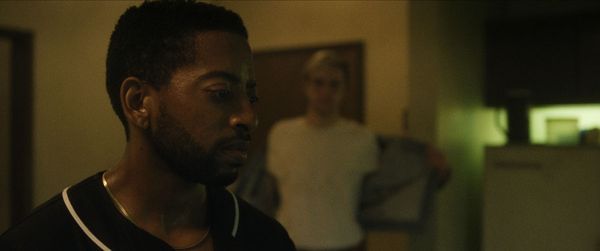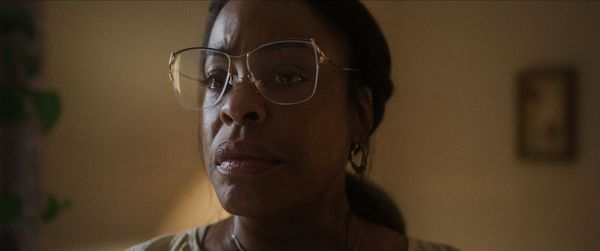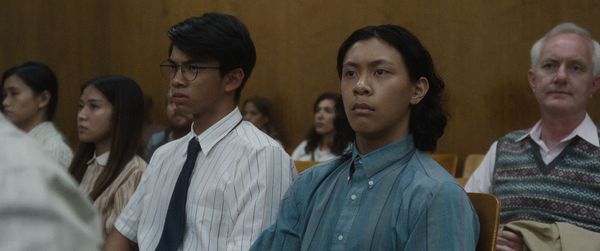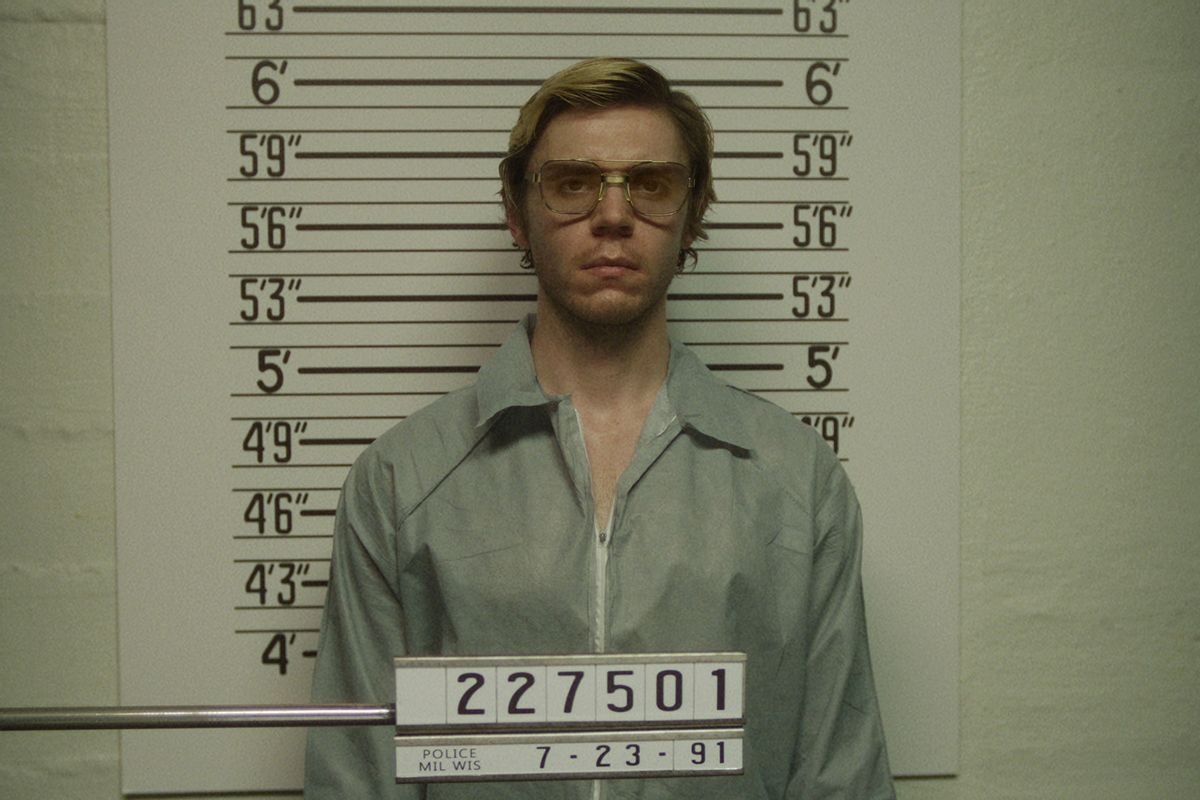It doesn't take a dedicated Ryan Murphy aficionado to understand why Jeffrey Dahmer appeals to him as a drama subject. The nature of Dahmer's singularly horrific crimes, several of which are studiously dramatized in Netflix's "Dahmer – Monster: The Jeffrey Dahmer Story," made him an international sideshow after he was finally caught in 1991.
By then the media and public already digested the bizarre horror of John Wayne Gacy and gorged themselves on Ted Bundy's gruesome story from every angle, primarily the ones that made cameras love his face.
Dahmer, however, was something else – a serial killing cannibal whose average appearance enabled him to ingratiate himself to Milwaukee's policemen. The most infamous incident re-enacted in "Monster" revolves around the two patrolmen called by Dahmer's concerned neighbor Glenda Cleveland (Niecy Nash), who encounters a dazed 14-year-old Konerak Sinthasomphone outside their apartment building after the boy escaped Dahmer.
Dahmer arrives and explains to the officers that Sinthasomphone, who he picked up nearby, is 19 and his live-in lover. Glenda objects, urging the cops to confirm that by looking at the kid's identification. They ignore her and help escort the boy back to the killer's apartment, where Dahmer finishes murdering him after they leave.
Glenda, you see, is a Black woman living in a low-income community populated by other Black folks, along with Latinos and Asians. Dahmer may have stood out, but to the cops in "Monster," whose actions are based on what happened, he's the one who needed protecting. Not the 17 non-white gay men and underage boys who accepted an invitation into his apartment and never re-emerged.
If one were to draw a Venn diagram with "American Horror Story" in one circle and "American Crime Story" in the other, "Monster" would snugly fit in the overlap.
Using the Dahmer case to illustrate the deadliness of prejudicial policing and the government's unequal applications of justice would seem to be the central undertaking of "Monster." In case people missed that – which is easy enough to do, given the story's fixation on Evan Peters' Dahmer – series co-creator Ian Brennan, Janet Mock, and David McMillan have civil rights leader Jesse Jackson (Nigel Gibbs) verbalize it in the episode titled "Cassandra."
The Dahmer murders aren't just a horror show, Jackson explains. "It's a metaphor for all the social ills that plague our nation. Bad policing. Underserved communities. The low value we assign our young Black and brown men, especially if they happen to be gay. The fact that Black and brown folks still don't have a voice and when we do speak up, we're too often ignored."
If one were to draw a Venn diagram with "American Horror Story" in one circle and "American Crime Story" in the other, "Monster" would snugly fit in the overlap. It is gruesome, disturbing, and – save for the standard creative license taken in its scripts – unnervingly precise in re-creating Dahmer's history and the legend that has arisen around him.
It is also an example of how the Ryan Murphy brand can be at odds with a story's mission.
 Shaun J. Brown as Tracy Edwards and Evan Peters as Jeffrey Dahmer in "DAHMER Monster: The Jeffrey Dahmer Story" (Courtesy Of Netflix)
Shaun J. Brown as Tracy Edwards and Evan Peters as Jeffrey Dahmer in "DAHMER Monster: The Jeffrey Dahmer Story" (Courtesy Of Netflix)
Murphy used famous murder cases to explore systemic injustice before, as we all know. I'm not talking about the "The People v. O.J. Simpson" chapter of his "American Crime Story" anthology, although that series was the most consistent and adroit in its execution. A better corollary to "Monster" might be "The Assassination of Gianni Versace," a series that used fame as a lure in its title and its casting, featuring Oscar Ramirez as Versace and Penelope Cruz as Donatella.
In the main, Murphy used their collective notoriety to lure us into a show that turned out to be more about Versace's murderer, Andrew Cunanan, and the ordinary people he murdered during a cross-country spree that ended with Versace's death on the doorstep of his Miami home.
Through "The Assassination of Gianni Versace," Murphy attempted to critique the homophobia that drove the narrative surrounding the case in the same way he and his team used the O.J. Simpson trial to illustrate the ways that race, class, and fame skew the justice system in this country.
In the Dahmer case, he, Brennan, and the writers have the opportunity to pull analytical threads from both of those previous works into a story that is bone-chilling due to the ordinariness of the players involved, and whose circumstances are infuriating for the same reasons.
According to the official press materials, "Monster" strives to center the people forever marked by Dahmer's grisly acts. The sixth episode, "Silenced," manages to hit that mark by taking us inside the life of Anthony Hughes, one of Dahmer's victims who was also deaf. By inviting us into the life of Hughes and his family, the audience is made to feel the grievous wound Dahmer's murder left on his family and his community instead of reducing him to just another plot in this Milwaukee Grand Guignol.
 Niecy Nash as Glenda Cleveland in "DAHMER Monster: The Jeffrey Dahmer Story" (Courtesy Of Netflix)
Niecy Nash as Glenda Cleveland in "DAHMER Monster: The Jeffrey Dahmer Story" (Courtesy Of Netflix)
"Cassandra" similarly places Nash's Glenda at the heart of its plot, and through her, we experience the sustained horror of what it must be like to live next to a maniac who dismembers, cooks and consumes other humans, along with the frustration of not being believed by those who are able but unwilling to stop him.
Nash's riveting performance is a secondary tentpole in the 10-episode series, although it could have been the main one. Glenda's agony over not being heard, and hearing lurid sounds, along with smelling unspeakable scents she can never forget, echoes the society-wide primal scream of women fed up with being designated as lesser citizens by an uncaring government.
In theory "Monster" is supposed to return our focus to the victims, but in Glenda's story, along with that of Dahmer's mother Joyce (Penelope Ann Miller), we have flesh-and-blood cautionary tales of the terrible price communities pay for disregarding women and their warnings.
But the disconnect between the show's stated purpose and its actuality is telegraphed in a title that blares Dahmer's name twice. The "monster" call-out is the part that Peters makes a mighty effort to bring to life through his dead eyes and the flat affect in the emphatic Midwestern accent he assigns to the killer. The Dahmer of "Monster" is designed to promote Peters' talent which, again, is part and parcel of Ryan Murphy's brand. Most recognize Peters as a core member of Murphy's repertory stable, having appeared in multiple seasons of "American Horror Story."
Whether a part is fictional or based on true events, the emphasis is on giving the producer's favorite actors roles they can slay – and sometimes that overpowers the intent of a project.
The actor also co-starred in the opening season of "Pose" in a part that made little sense, save for its design to attract white viewers to a show about Black and Latino trans women and gay men.
Glenda's agony over not being heard ... echoes the society-wide primal scream of women fed-up with being designated as lesser citizens by an uncaring government.
The writers could have employed Peters similarly in "Monster," for the nobler reason of ceding more space to people Dahmer's shadow obscured. But it doesn't. Instead, we're made to sort through scenes from his childhood and young adulthood, checking off the list of standard stops on the "What makes him tick?" American murderer's TV tour.
The effort to humanize Dahmer is both obscene and, sadly, textbook. True crime thrives on deriving explanations for unspeakable acts people do from the crime they commit and the ones committed against them. More often than not, however, fictional takes on these crimes end up humanizing the criminal. Ted Bundy's mythos persists in large part because of this, popping up in the guises of handsome leading men hungry to play him, including but not limited to Mark Harmon, Cary Elwes, Chad Michael Murray, Zac Efron and Luke Kirby.
 Brayden Maniago as Somsack Sinthasomphone and Kieran Tamondong for Konerak Sinthasomphone in "DAHMER Monster: The Jeffrey Dahmer Story" (Courtesy Of Netflix)
Brayden Maniago as Somsack Sinthasomphone and Kieran Tamondong for Konerak Sinthasomphone in "DAHMER Monster: The Jeffrey Dahmer Story" (Courtesy Of Netflix)
"Monster" attempts to circumvent this trap near the end of the season through several subplots featuring victims' families. One depicts the lingering suffering to which the murdered men's loved ones are subjected by having Dahmer transformed into an ironic comic book hero.
Another scene shows Glenda raging at one of the live interviews conducted with Dahmer as a neighbor, a fellow Black woman, watches. The woman agrees with her anger before starting to say, "Maybe if we can understand what motivated him . . ." Glenda isn't having it, which insinuates neither should we. And yet, by the end of "Monster," we know Jeffrey Dahmer's story down to his parts. That's no joke – a scene at the end shows us what happened to this demon's brain.
Want a daily wrap-up of all the news and commentary Salon has to offer? Subscribe to our morning newsletter, Crash Course.
To say Dahmer still haunts is to call attention to a material fact. His legacy has inspired murder tours and an array of movies, all of which forget that many of the people left psychologically scarred or shaken by Dahmer's crimes are still alive. Some victims' relatives are livid at the way "Monster" portrays Dahmer or, in the case of Errol Lindsey's sister Rita Isbell, how it portrays them. The actual footage of Isbell's victim impact statement, set side by side with an actor's recreation in "Monster," is circulating on social media.
Admiring fans of the show marvel at how closely the actor mimics the details of Isbell's physicality as she screams and swings at Dahmer, requiring court officers to restrain her. But that awe forgets that Isbell is a human being who wasn't performing for cameras and wasn't given any warning that one of the most painful moments of her life would be recreated for entertainment.
It serves as a reminder of the discomforting way the true crime genre has trained us to consume tragedy and turn murderers, victims, and loved ones left behind into characters. "Monster" could have interrogated that more thoughtfully.
Instead it forces Glenda to speak for it, and in contradiction to the message nearly every scene before establishes, by slapping down her neighbor's feeble excuse for watching a newsmagazine give airtime to the man-eating beast with whom she shared a wall.
"This is not some Halloween story," Glenda says. "This is my life."
"Dahmer - Monster: The Jeffrey Dahmer Story" is currently streaming on Netflix.



Shares